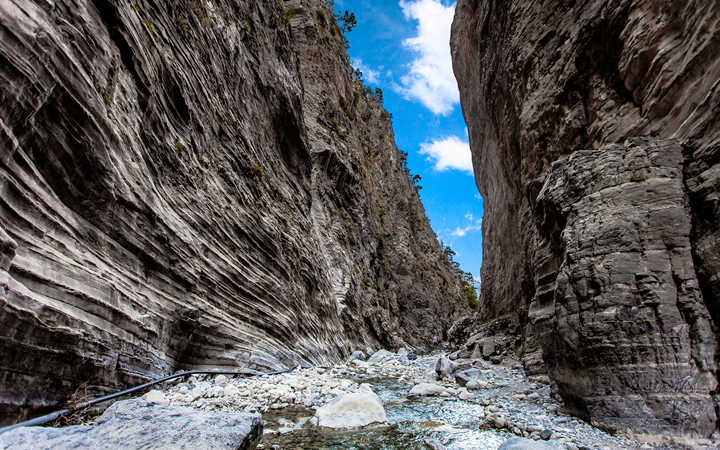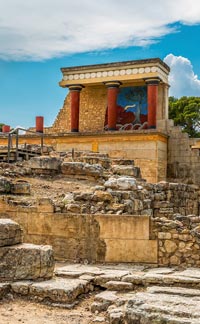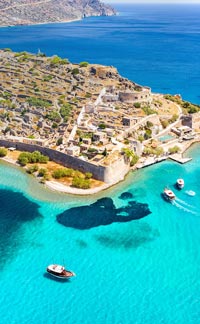Crete's second most popular destination is not some ancient site (such as the Minoan palace at Knossos, which is first on the list of popular destinations), or some beach resort, or some museum, or some medieval city. It's something that man did not create: Samaria Gorge.
The gorge, which has been a national park since 1962, is also a UNESCO World Biosphere Reserve. UNESCO Biosphere Reserves "...promote solutions reconciling the conservation of biodiversity with its sustainable use (Wikipedia)."
This spectacular landform runs south about 18 km from the village of Omalos in the north into the village of Agia Roumeli on the Sea of Libya on the south coast. Its northern entrance is south of Chania about 22 km in a straight line, which translates to something close to a 45-minute bus ride. The entrance path is well south of Omalos, making the hike about 13 km in length.
A river running south out of the White Mountains carved the gorge over the millennia. It's still carving it. The river dries up during the summer, but can become a raging torrent during the winter rains. At the trail head at its northern end it's1,250 meters above sea level, so the approximately 6-hour walk (3 hours if you push it and don't stop for anything) is all downhill.
High points of the walk include the "Iron Gates," where the walls close in to reduce the width of the gorge to 4 meters as they rise above you about 300 meters, and the abandoned village of Palia (Old) Roumeli. People had been moving to the newer version of the village, on the coast about 1.5 km away from the old village, for years because seasonal flooding made living there untenable. The village was finally completely emptied out in 1962 with the designation of the gorge as a national park.
Samaria Gorge opens for visitors seasonally, beginning in May. Winter rains wash out much of the trail, and it needs repair work during April. The season ends at the end of October. The gorge is not safe in the winter because of the danger of flash floods.
The trail offers plenty of springs for water, and there are wardens who can help you on your way. It is an exceptionally well-maintained place, and also has toilets and places to throw your trash. You can't camp there, and you have to present your time-stamped ticket as you leave to prove that you didn't.
Although the gorge can have up to 2,000 visitors a day, you won't see many people because you're all walking in the same direction. That being said, its beauties are that much more enjoyable on those days when it doesn't host thousands of visitors. If you come during the summer high season one way to avoid the crowds is to find a place to sleep in Omalos (which will be relatively cheap), and start out at dawn the following day before the tour busses start arriving at 7:30.
Another option is to leave late- around noon- but that carries with it the disadvantage that you would have to spend the night in Agia Roumeli because you'll miss the last boat to Chora Skafon on the east, and Paliochora on the west, from which busses travel back to Chania.
A little common sense goes a long way when walking the gorge: wear a hat, have decent shoes, be prepared to walk on rocky, i.e., hard ground, be in decent shape, and try not to start in the middle of the day during a heat wave. It is a fantastic experience. If you're lucky you'll see some Cretan mountains goats clambering up and down the crevasses in the gorge's walls.




















